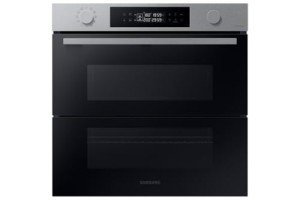The Greatest Sources Of Inspiration Of Built In Ovens

Built-In Ovens in the UK: A Comprehensive Guide
Built-in ovens have actually become a vital function in modern-day cooking areas throughout the UK, offering both functionality and design. They are developed to fit flawlessly into kitchen cabinets, using a sleek and integrated appearance that matches contemporary kitchen designs. This short article explores the advantages of built-in ovens, the different types offered, essential features to think about, and frequently asked concerns that will assist customers make informed decisions.
Advantages of Built-In Ovens
Selecting a built-in oven features numerous advantages, which consist of:
- Space-Saving Design: Built-in ovens are developed to fit within kitchen cabinets, making them ideal for smaller sized spaces where free-standing units may use up excessive space.
- Visual Appeal: These ovens use a clean, modern appearance that enhances the overall appearance of the kitchen. They can be positioned at eye level, making them accessible while reducing flexing or crouching.
- Integrated Technology: Many built-in ovens come geared up with innovative cooking innovations, consisting of convection cooking and self-cleaning features, making cooking more efficient and problem-free.
- Increased Resale Value: A modern-day, stylish kitchen with built-in appliances can significantly increase a home's resale worth, making it more attractive to potential purchasers.
- Variety of Options: Built-in ovens come in numerous sizes and styles, allowing house owners to pick one that fits their particular kitchen design and cooking requirements.
Types of Built-In Ovens
Built-in ovens are readily available in different setups, each dealing with various cooking designs and preferences. Here are the primary types:
| Type of Built-In Oven | Description |
|---|---|
| Single Ovens | These ovens feature one compartment, generally ideal for basic baking and roasting requirements. |
| Double Ovens | Including 2 compartments, double ovens permit for synchronised cooking at various temperatures, making them best for large households or those who frequently entertain visitors. |
| Mix Ovens | Combining a traditional oven with a microwave, these versatile systems conserve space and time, enabling quick heating and cooking. |
| Steam Ovens | Utilizing steam cooking innovation, steam ovens are ideal for healthy cooking, keeping moisture and nutrients in food while offering a special cooking approach. |
| Wall Ovens | Set up higher up in the kitchen, wall ovens can be single or double. They permit easy access while maximizing space on the counter. |
Secret Features to Consider
When selecting a built-in oven, it's important to examine certain functions. Customers should think about:
- Size and Capacity: Determine the area available in your kitchen and pick an oven that fits comfortably without frustrating the style.
- Energy Efficiency: Look for ovens with greater energy ratings, as they can save money with time and are more eco-friendly.
- Cooking Functions: Different ovens come with numerous cooking modes-- such as baking, grilling, and rotisserie. Examine which works deal with your cooking style.
- Control Options: Newer models often include touch controls, digital interfaces, and smart innovation that permits remote operation through smartphone apps.
- Self-Cleaning Features: Many built-in ovens included self-cleaning options, significantly simplifying oven upkeep.
- Complete and Design: Choose finishes-- like stainless steel, black, or white-- that enhance the general kitchen aesthetic.
Popular Brands in the UK
Numerous brand names dominate the built-in oven market, each offering various functions and price points. Some of the most popular choices include:
- Bosch
- Siemens
- Neff
- Samsung
- Hotpoint
- AEG
- Miele
These brand names are understood for their reliability, development, and client service, making them a relied on choice for customers.
Regularly Asked Questions (FAQs)
1. Are built-in ovens more costly than freestanding designs?
Built-in ovens tend to be more pricey than freestanding models due to their customized sizing, styling, and advanced functions. However, they provide greater value in terms of aesthetic appeals and functionality.
2. Can I install a built-in oven myself?
While some helpful property owners might attempt a DIY setup, it is typically advised to hire a professional to guarantee correct installation, particularly worrying electrical and pipes connections.
3. How do I tidy my built-in oven?
Many built-in ovens featured self-cleaning choices, which considerably decrease the effort required. For models without this feature, regular cleansing with non-abrasive cleaners and a soft fabric is necessary for maintenance.
4. What is the average life-span of a built-in oven?
Normally, built-in ovens can last in between 10 to 15 years, depending on use and upkeep. Regular servicing can assist extend the device's life-span.
5. Can integrated gas oven and hob packages change a built-in oven with a various brand name?
Yes, built-in ovens can typically be changed with any compatible design, but it is vital to ensure that the new oven matches the existing cut-out space in the kitchen cabinetry.
Built-in ovens offer an advanced blend of utility and design, making them an integral part of contemporary kitchen areas in the UK. With numerous types, distinct features, and a range of choices offered from popular brands, house owners have adequate options to choose an oven that satisfies their cooking requirements and kitchen looks. By comprehending the benefits, types, and important functions, customers can make informed choices that enhance their cooking experiences. Whether for day-to-day meals or unique celebrations, a built-in oven is an investment that guarantees benefit and quality for many years to come.

